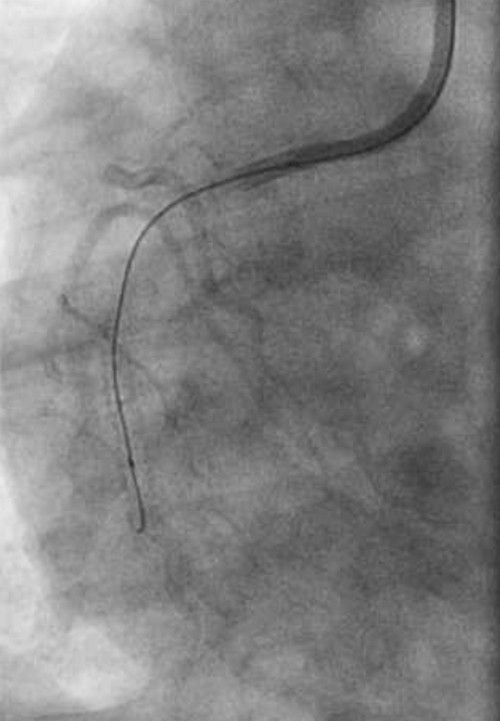Case 21: RCA CTO PCI with Antegrade Approach
Case Presentation
- A 52-year-old man presented with CCS III angina pain and dyspnea on exertion. Stress ECHO showed wall motion abnormalities with ischemia of inferior and inferior basal segment of the left ventricle, and LVEF of 52%.
- Medical history: HTN, HLD, current smoker, PVD, CAD s/p PCIs
- Medications: Aspirin 81mg, Clopidogrel 75mg, lisinopril 10mg, metoprolol tartrate 25mg BID, rosuvastatin 5mg
Coronary angiogram showed 2V CAD with CTO ISR of mid RCA, 70-80% stenosis in proximal RCA with 50-60% in mid LAD.
-
Left sided angiogram did not show clear LAD septal connection to RCA.
PCI Strategy
- ISR CTO length ~ 20-25 mm, No good septal collaterals
- Planned for Antegrade approach
- AWE (Fielder > Gaia > Confianza Pro 12) with microcatheter
- If antegrade failed, would consider retrograde approach but would be challenging as there were no direct septal collaterals.
STEPS
- We started out with Fielder (non tapered polymer jacket tip with tip load of 1g) and FineCross microcatheter to find microchannel of CTO.
- Then AWE was done by changing to Gaia 3 (tapered, hydrophilic coating, composite core with 1:1 torque and tip load of 4.5g) to cross the CTO segment but it was not successful.
- A stiffer wire, Confianza Pro 12 (tapered, hydrophilic coating with tip load of 12.4g) was exchanged for drilling.
- After multiple attempts, Confianza pro 12 went into subintimal space and created multiple dissection planes.
- We had tried to redirect Confianza wire into the true lumen but it was without success.
- In a setting of multiple small dissections, a hydrophilic polymer jacket wire is very useful to negotiate back to the true lumen.
- Another strategy is to use parallel wire technique to wire into the true lumen.
Wiring Technique
Wiring Technique
- We use a Whisper wire (full Polymer cover with hydrophilic coating and tip load of 1.2g) to negotiate back into the true lumen.
STEPS
- After successful wiring into the true lumen, serial balloon dilatation and scoring balloon PTCA using Angiosculpt was performed.
- Three DES (3.5 x 20mm, 3.5 x 48mm and 2.5 x 38 mm) were placed in proximal, mid and distal RCA respectively with an excellent result.
Final Angiogram
Learning Points
- The operator should have a wire escalation plan for the antegrade approach. Here, we used Fielder > Gaia 3 > Confianza Pro 12.
- In a setting of multiple small dissection tracts, it is often challenging to re-direct a stiffer wire into the true lumen.
- We would highly recommend using a polymer jacketed, hydrophilic wire (i.e. Whisper ES) to negotiate back into a true lumen.
- Another option is a parallel wire technique – while a stiff wire leaves in a subintimal space, use another hydrophilic wire to negotiate into the true lumen.













